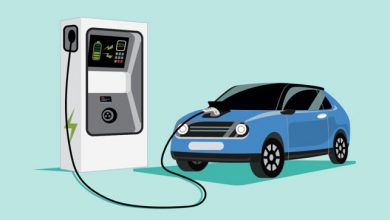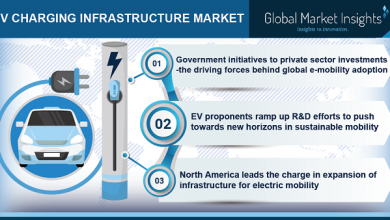There are no challenges in transition to EV that we cannot overcome

Contrary to word spreading around about lack of infrastructure being the biggest roadblock in transition to EV, we believe awareness and trust play a key role in leading a smooth transitioning of one small group at a time. People need to be given a hands on experience on their product, mainly to understand the working of the electric vehicles as they won’t believe in printed or digital media. OEMs and distributors here have to step up in extending support to make this happen to accelerate the transitioning.
Policies play a major role for the EV shift
As there are many capable manufacturers building vehicles that would require nil to minimal adjusting to be required when shifting to electric, We believe the central government should bring out more lucrative benefits as the Delhi government is offering, understanding the pollution level of all major cities.
All state governments have a subsidy for 2W, 3W & 4 wheeler. The FAME 2 scheme related to electric vehicles with subsidy upto 1.5 Lakh rupees plays a major role. So we think the government is doing well with these policies as it helps to make a shift.
OEMs & distributors need to partner up for building charging stations
However big corporations understand that a public mentality or opinion cannot change just with spreading awareness and we need to touch each and every life to make them believe. There are charging stations being developed in all major hotspots in every major city. It’s a challenge to set up charging networks across cities and states solving the issue as controlling and maintaining them safely as many do not simply have stable electricity and power theft is common.
Manufacturers need to understand that setting up a unique and exclusive charging network for just their vehicles will not be feasible and will lead to much confusion. For e.g. If Hyundai cars charged at only Hyundai charging stations and similarly for every OEM, imagine how much space will be consumed and proximity issues raised if everyone wants to set up a different charging station!
The charging station should be universal for every oem, for this the government has to have norms of using a universal charging port. I believe we will get there soon as the market adapts to EV.
Battery Tech Scenario
Battery prices are the next big challenge
Lead acid batteries will be obsolete within 2 years with five major reasons to it
- The fire risk they possess.
- The humongous real estate.
- The extremely long charging time required.
- The hefty weight problem.
- Limited life cycles.
With the requirements of the current logistics market, we need to compete with the existing diesel or cng model to be preferred by the fleet owners or individuals as a matter of fact, I cannot emphasize more on the point, there can be no compromised performance if you want your vehicle preferred over rivals.
Coming to the most commonly used vehicular battery currently worldwide, the lithium-ion. Lithium-ion battery packs use very highly priced raw materials. Both vehicle and battery manufacturers have come up with many different ways to cut off the battery cost for the end users. Such as lease options or daily rental or a swappable battery infrastructure. Lithium batteries cost about 40% of the total vehicle cost. Second biggest drawback which branches out to another problem is cell degradation.
Recycling
The root problem is lack of battery recycling technologies. Picking an average of battery packs available in the market today, it retains only 80% of its original capacity at the end of 1000 to 2000 charge-discharge cycles which roughly translates to three to five years. In a market where there is so much range anxiety even for new vehicles, this single problem tends to shoo away potential buyers.
This can be solved if someone miraculously forms a tie up like Tesla and Panasonic to create a million mile battery pack or in maybe 10 years if the cells become more affordable or a new battery raw material emerges.
Battery worries
What immediately strikes people’s minds is that they have to bear 40% of the vehicle cost every 3 to 5 years, unfortunately this is true but they save a lot more money because of all the fuel and maintenance savings. Summing this challenge, We need to be aware of the long term benefit, monetary as well as environmental benefits.
Once users see some brave souls go electric and learn from their experience, they will be a lot more confident about the concept and learn to live with its drawbacks because of other benefits like we do in ic engine vehicles. Once there will be a generation of used EVs, there will be a system in place for reusing those batteries in home energy, goods or storage facilities.
Current scenario in battery raw material and affordability of evs
Moving into depths of the battery section, the highest cost is the raw material. The element Lithium is mined in only 4 locations & the chances are we don’t have much reserves for the same. If we stick with Li-ion cells we would just be on the same level of import tariff as crude oil.
There are multiple players popping up and even governments are trying to push, but we simply lack the infrastructure and supply chain and technology required to manufacture cells efficiently on the pace we will require it in the near future.
Different cells have different characteristics and we need to research all of them to suit different needs of even states in India as you see North is too cold. Centre, east and west are too hot and humid, South is too hot and wet.
Cell manufacturers will have to come up with a chemistry which stays efficient and safe in all these climatic conditions. Which is very difficult, until then we will have to adjust with the high cost and fluctuating efficiency in relation to regions around the country.
There are Lack of good robust built quality products at affordable rates whereas Mercedes, Volvo, Audi, tesla, rivian are coming up with fantastic, out of the world products, they are just not affordable and these expensive vehicles distant the masses & make them think a good electric car cannot be affordable.
In order to make them affordable we have to sell a lot of them, to break this loop we do not want the masses to believe EVs to be a luxury product. This phenomenon can be similar to that of phone calls. They were very expensive and you had to pay to receive a call whereas now you could talk virtually free endlessly.
In India where one nuclear family owns only one car which they use for daily transit and outstation trips say twice a month and long tours once a year. 60% of them prefer to drive their own vehicle on the trips, this is a requirement which the EVs right now with the limited practical range of 200km that cost twice as much cannot suffice.
When car rentals become more common and practical and people begin to accept it on long trips I feel the masses will be easily able to afford EVs for their daily run and fast charging will be the norm.
Certification bodies need to improve their UI/UX!
Also our set of rules in the motor vehicles act book are quite obsolete and directly picked up from ic engine tests which only focus on legality and not capability of the vehicles. This demotivates many manufacturers from mass producing vehicles and motivates mal practices in rural areas to run vehicles without certification above limits.
When prepping our vehicles for certification I realised it is a nightmare just getting hands on the material to refer to the laws, let alone understanding them and making our vehicles better road suitable.. They want you to not understand and seek out shortcuts in the process they can cash on.
I feel that there should be amendments in the motor vehicles act to suit and help manufacturers understand the laws better and what they act for so as to better build good vehicles rather than only making them legally right.
Future of EV sector.
Lastly we as humans long for change
Constant improvements is the way of life
We accept the fact that change is the only constant and we are moving towards great changes in the automotive sector. The mammoth task is over getting people to believe electric vehicles can be feasible, it is only a matter of time when we will see only electric vehicles on road and gas powered vehicles will become exotics.
Battery prices and range wouldn’t be an issue with technological advancements in GRAPHENE cells. It’s not science fiction anymore, Lithium ion was used in cell phones now in cars, Graphene is now used in cell phones, not so long before we figure out a way to power our EVs with it.
We could charge for a range of 300km in less than 10 minutes! And the concept of cell degradation would be an obsolete term. There will always be demand for something new in the EV space and manufacturing companies will definitely find a way to supply efficiently, in fact some of the companies are experimenting on different battery chemistry right now.
Because the drivetrain has become 70% clutter less, simple and maintenance free, EV manufacturers have so much to explore into IOT and autonomy which will be like a miracle happening for non tech vehicle users when they experience autopilot or are able to summon their vehicle or drive it like a remote control toy when the vehicle listens to your destination and drives you to it or it adjusts to your seating position when you enter the vehicle.
It will only get better from here and the challenges in transition to EV will be just a small phase compared to the wonders we will experience in the near future.
Author:
Vitan Jagada and team are a group of engineers and industrial designers that are driving the electric revolution in Mumbai, Maharashtra.
Having set-up an assembly line for 3 wheeled cargo vehicles already, eyeballing different segments to expedite the EV adoption process in mumbai along with the FAME 2 scheme.
Published in Telematics Wire





